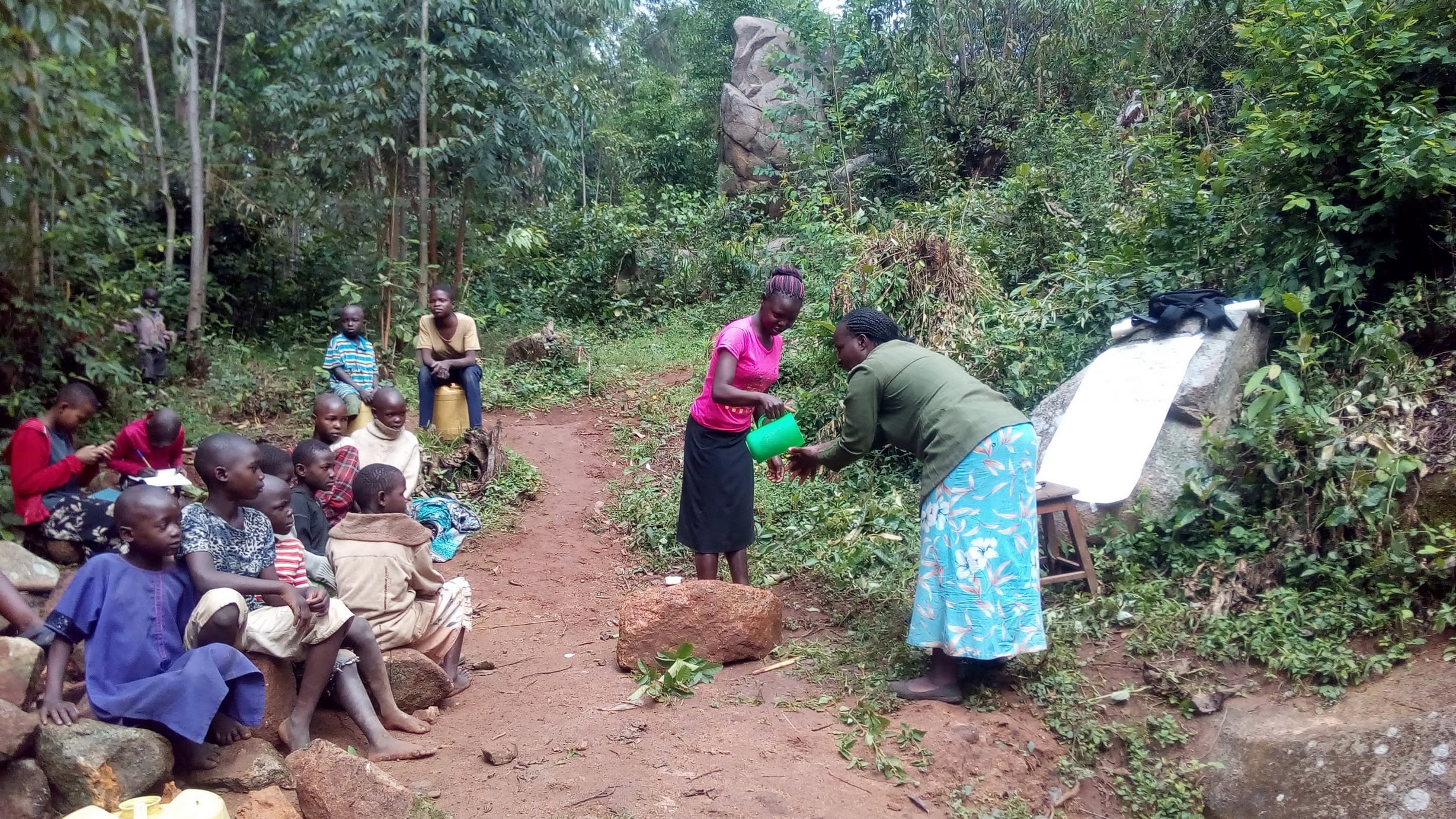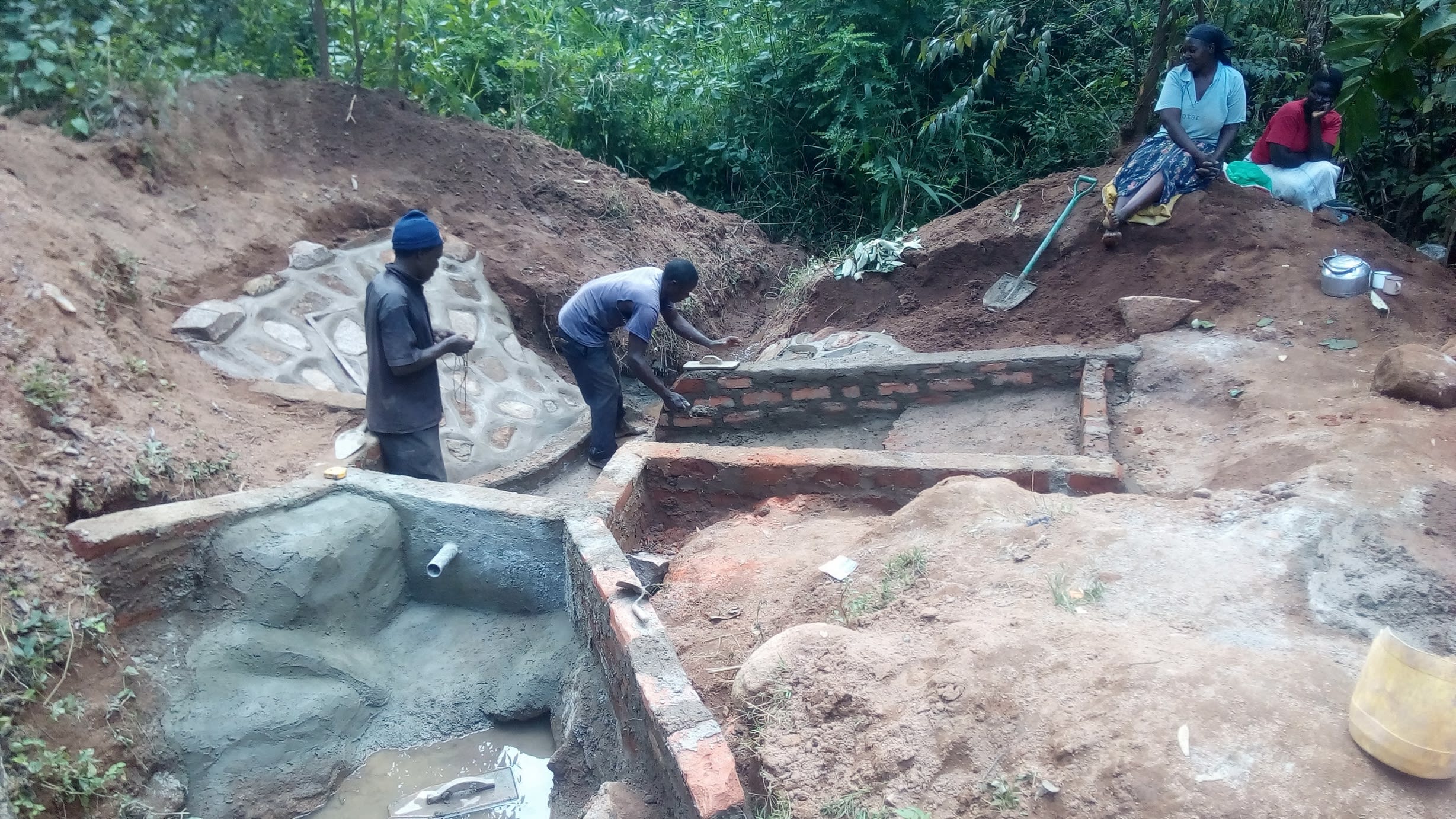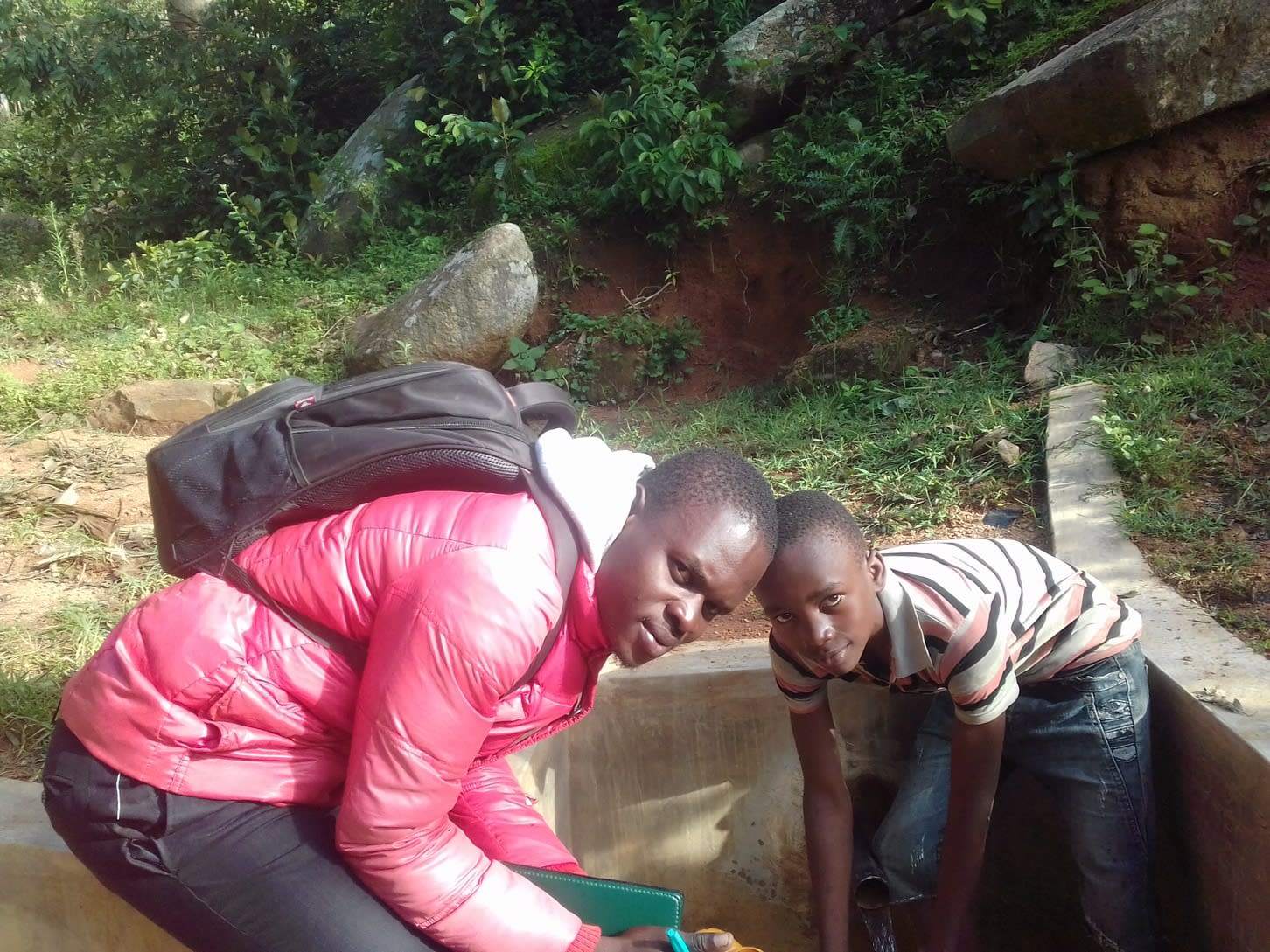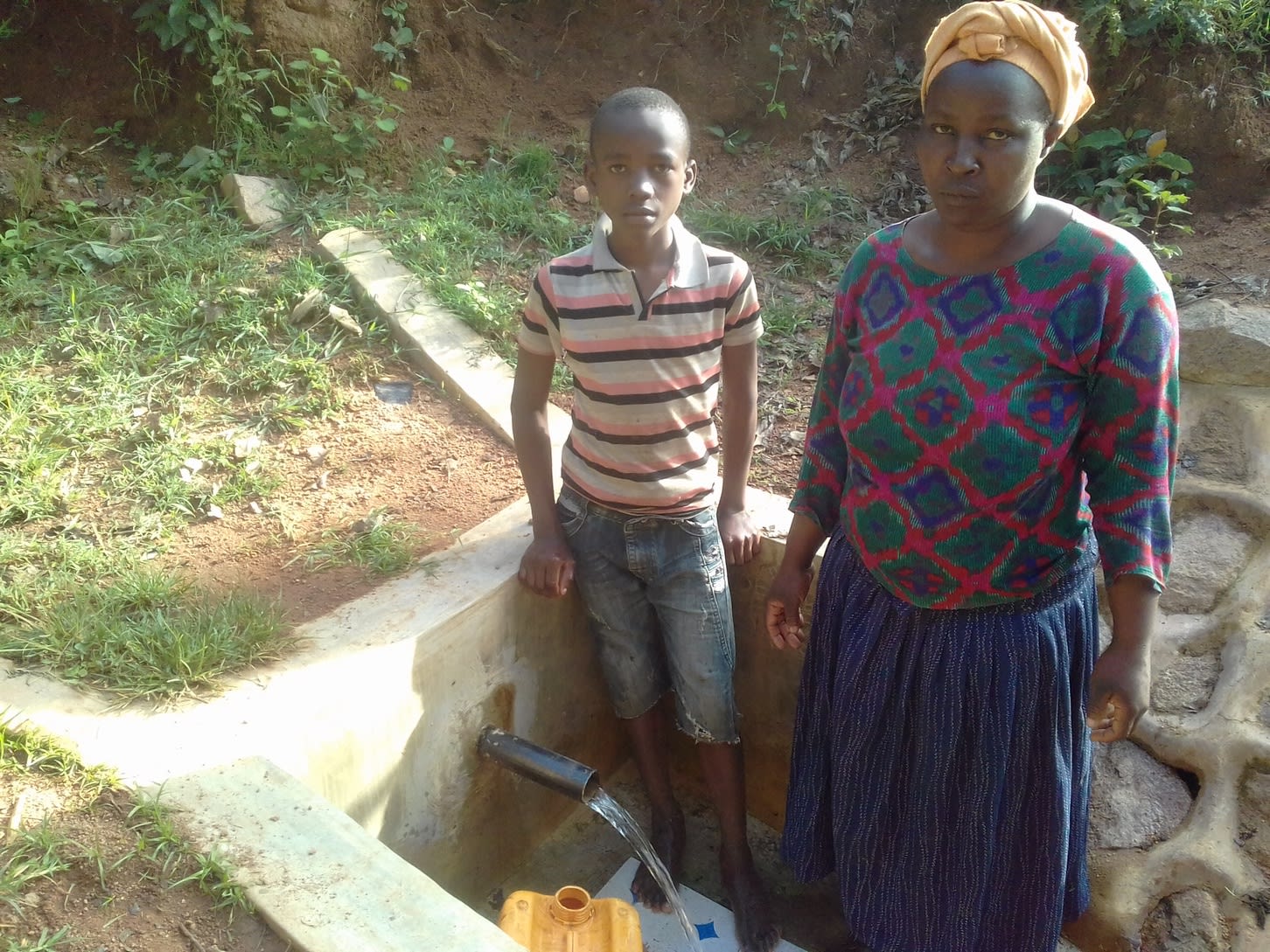This project is a part of our shared program with Western Water and Sanitation Forum (WEWASAFO). Our team is pleased to directly share the below report (edited for clarity, as needed).
Welcome to the Community
People living in Gidagadi Community get up early in the morning to go to their farms. They plant a variety of vegetables and cereals to feed their families, while excess is sold or traded in the local market. Many people also engage in dairy farming and poultry keeping. Though the proceeds from the sale of these crops is low, community members adjusts their budgets so as to meet their daily needs.
This location is in a remote area where people are close to nature as birds sing their melodies and trees provide fresh air. And since they're so remote, people get farm produce and animal products at low costs compared to people who live in more urban areas.
We're building a large rainwater catchment tank at Gidagadi Primary School. Clean water at school is great, but doesn't do much good if students drink dirty water while they're home. Headteacher Rose Lamka told us that many of her students rely on Anusu Spring, so we went out into the village to see the water source for ourselves.
Water Situation
Anusu Spring has served the people living in Gidagadi since the 1980s. The spring flows out from and pools between two large stones in the ground, surrounded by bushes on one side and and open yard on the other. The water is completely vulnerable to contamination introduced by humans, animals, and rainwater.
Women are those most often seen fetching water at Anusu Spring. They use plastic buckets or jerrycans to carry the water back home. If the container is small enough, women will dunk the container directly under the water. If too large, women bring a smaller cup to bail water. When delivered back home, water is poured from the plastic container into barrels or pots found in the kitchen, living room, and by the latrine (if a family has one).
After drinking water from Anusu Spring, people suffer from stomachaches and diarrhea - often diagnosed as typhoid.
Sanitation Situation
Many people have unsafe latrines with wooden floors and mud walls. These are weak and can sink if used for a long period of time, causing injury or even death to its users. The mud walls crack and expose the inside, while other latrines are just made of plastic bags! There are no hand-washing stations for people to wash up after using these latrines, either.
Mrs. Lydia Sayo told us that "many people in our area still lack knowledge on the use of mosquito nets provided by the government because they are given free. Some use them in their gardens as fences! Nearly every month, at least one person gets sick..." But despite the poor conditions, the community is extremely hopeful and excited; when we mentioned training, they wanted to hear all about the topics we're covering!
Plans: Hygiene and Sanitation Training
Community members will attend hygiene and sanitation training for at least two days. This training will ensure participants are no longer ignorant about healthy practices and their importance. The facilitator plans to use PHAST (Participatory Hygiene and Sanitation Transformation), CLTS (Community-Led Total Sanitation), ABCD (Asset-Based Community Development), group discussions, handouts, and demonstrations at the spring.
Training will also result in the formation of a committee that will oversee operations and maintenance at the spring. They will enforce proper behavior around the spring and delegate tasks that will help preserve the site, such as building a fence and digging proper drainage.
Plans: Sanitation Platforms
On the final day of training, participants will select five families that should benefit from new latrine floors (though they're so excited they've already started talking about who should get them).
Training will also inform the community and selected families on what they need to contribute to make this project a success. They must mobilize locally available materials, such as bricks, clean sand, hardcore, and ballast. The five families must prepare by sinking a pit for the sanitation platforms to be placed over. All community members must work together to make sure that accommodations and food are always provided for the work teams.
Plans: Spring Protection
Fetching water is predominantly a female role, done by both women and young girls. Protecting the spring and offering training and support will therefore help empower the female members of the community by giving them more time and efforts to engage and invest in income-generating activities.
Construction will keep surface runoff and other contaminants out of the water, which means the water will be safe, clean, and adequate.

 Protected Spring
Protected Spring
 Rehabilitation Project
Rehabilitation Project



























